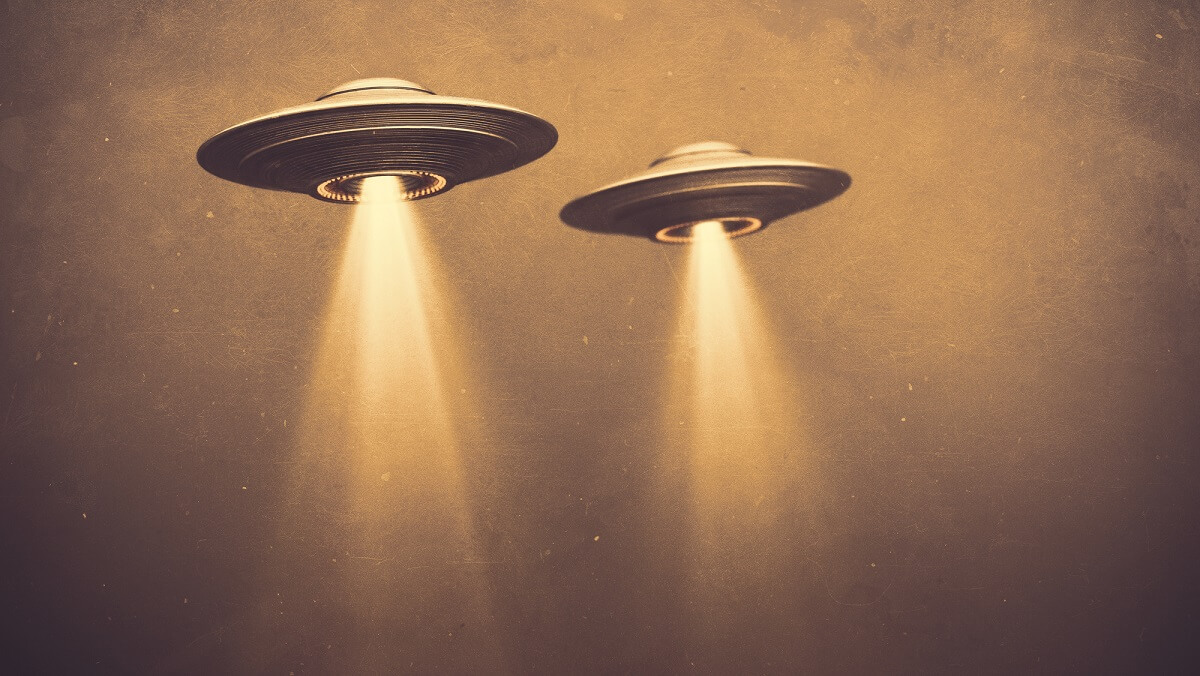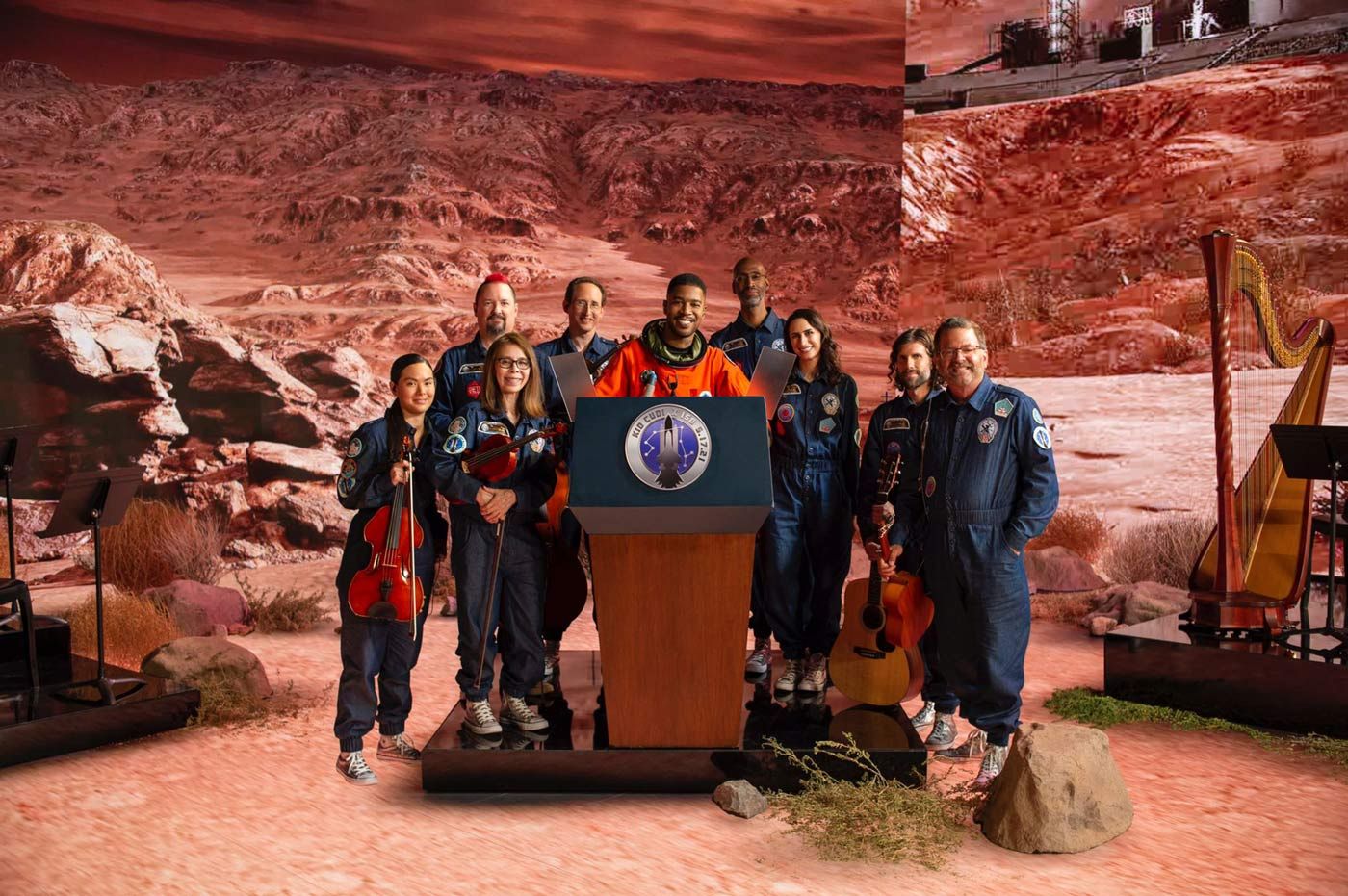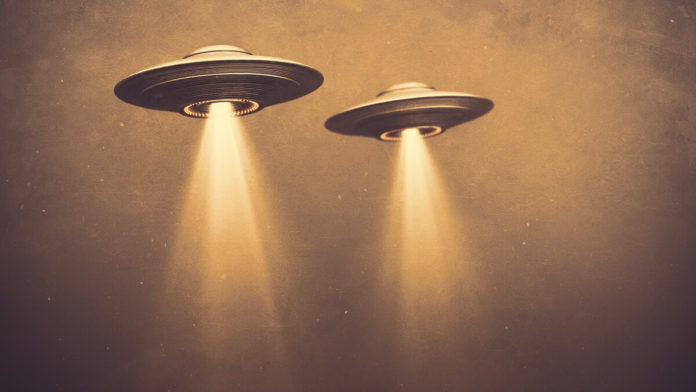The Government UAP Report – Is it UFOs?
The US government issued its long-awaited report on UAPs – Unidentified Aerial Phenomena – in June. While the report finds no direct link with alien technology, it does not rule out aliens either. One of the SETI Institute’s senior astronomers, Seth Shostak, weighs in with his take.
The report apparently hedges a lot, and the only thing it affirms is that the objects weren’t American-made craft, either military or civilian.
So technically, that leaves the door open. Maybe what’s visible in the videos are foreign drones, hypersonic weapons or some other high-tech hardware, a circumstance that should cause insomnia for Pentagon brass.
…
So, it may simultaneously satisfy everyone and no one. Skeptic academics can continue to scoff at the alien visitation idea, and the UFO believers can continue to cry cover-up. Everyone will retreat to their neutral corners and hope for a knockout in the next round.
 But.. Are Spacefaring Aliens “Alive”?
But.. Are Spacefaring Aliens “Alive”? Will the iconic shaking of alien hands ever happen? Seth Shostak has an opinion on whether alien travelers would be humanoid.
“Their cognitive abilities will probably not be powered by a spongy mass of cells we’d call a brain,” he writes. “They will probably have gone beyond biological smarts and, indeed, beyond biology itself. They won’t be alive.”
Even with humanity’s fastest rocket it would take 75,000 years to get to Proxima Centauri, the closest habitable system, he says. So any interplanetary explorers would have to be synthetic.
“Artificial intelligence aliens may not be as appealing as those who are warm-blooded and squishy, but we shouldn’t get hung up on an anthropocentric viewpoint,” he says.
“Researchers who work in AI estimate that machines able to beat humans on an IQ test will emerge from labs by mid-century. If we can do it, some extraterrestrials will have already done it.”
 Kid Cudi’s Out-of-this-World New Show on Amazon Prime
Kid Cudi’s Out-of-this-World New Show on Amazon PrimeKid Cudi, rapper, singer, songwriter, actor, and producer, joined forces with the International Space Orchestra for Amazon’s Prime Day Show, along with performances by Billie Eilish and HER.
As he embarks on his biggest mission to date, Kid Cudi departs Earth to establish a new community on the moon in this intercosmic performance. Featuring music from his album Man on the Moon III, Cudi collaborates with the International Space Orchestra, the world’s first orchestra composed of space scientists from NASA Ames Research Center, the SETI Institute, and the International Space University as his backing band, in a musical collision defying sight, sound, and space.
 Citizen Science Astronomy Soars During the Pandemic with the eVscope
Citizen Science Astronomy Soars During the Pandemic with the eVscopeUnistellar’s user-friendly eVscope encouraged more people to take up astronomy during the COVID-19 crisis, even in light-polluted cities. Astronomy continues to be the science where even amateurs can make exciting discoveries and expand human knowledge.
As it soaked up the sunlight bouncing off the asteroid, Knight’s scope recorded what it saw: a little bright blob arcing across the night sky.
That data can be passed to scientists, like Unistellar’s partners at the renowned SETI Institute. Since 1984, SETI has been searching for life outside of Earth, and working with NASA to find planets orbiting other stars, called exoplanets.
…
Even if they [amateur astronomers] don’t know who else is viewing an object, people are working together to corroborate and confirm findings. Sometimes it’s about pinning down trajectories or shapes of asteroids, sometimes it’s about discovering exoplanets orbiting distant stars.
For many observations, people don’t find out immediately if what they captured was actually helpful.
“Then you get an email a few months later, and oh, hey, you actually caught something, you are one of three people in the entire history of the world to ever capture this,” said Knight. “It makes up for the lack of sleep.”
 StartOut Empowers LGBTQ+ Entrepreneurs, Including Mentorships in Partnership with Amazon
StartOut Empowers LGBTQ+ Entrepreneurs, Including Mentorships in Partnership with AmazonStartOut seeks to level the playing field for LGBTQ+ business people in what is often an unfriendly environment. SETI Institute senior scientist Franck Marchis appreciates the assistance found in StartOut events as a co-founder of telescope company Unistellar.
According to StartOut data, if everyone had equal access to funding and resources, there would be 10 times more LGBTQ entrepreneurs in the US. Not only that, but states with unfriendly LGBTQ policies have lost over 1 million jobs as LGBTQ entrepreneurs moved away to start their own businesses.
…
“I was so used to going to scientific conferences where I was one of few people of color, never mind gay,” [Marchis] said. “So when I saw how diverse the StartOut events were, I just thought, ‘wow.’ It’s so refreshing to go to a place where you see so many other people like you.”
 Venus, Here We Come!
Venus, Here We Come!NASA has announced two new Venus exploration missions that will launch between 2028 and 2030: the Deep Atmosphere Venus Investigation of Noble gases, Chemistry and Imaging mission (DAVINCI+) and the Venus Emissivity, Radio Science, InSAR, Topography and Spectroscopy Probe (VERITAS). SETI Institute Senior Astronomer Seth Shostak and Science Advisory Board member David Grinspoon are enthusiastic about the new findings that can help explain Venus’ past and possibly our future.
“Venus is a near-twin to the Earth in many respects, so close and nearly identical in size, and for all we know the two planets were quite similar when young,” David Grinspoon, an astrobiologist with the Arizona-based Planetary Science Institute, told The Daily Beast. “But they’ve evolved down very different pathways. Venus has much to tell us about how Earth-like planets evolve, how their climates can change, how they can lose the surface conditions we depend upon for life and how the Earth may end up in the far future.”
“It’s a first-rate tragedy,” Seth Shostak, an astronomer who works for the California-based SETI Institute, told The Daily Beast. “Four billion years ago, Venus and Earth really were sister planets—oceans on both, atmospheres on both, et cetera. But like Jeffrey Dahmer, Venus went bad. Carbon dioxide built up in its atmosphere, fostering global warming at industrial scales.”
Big Picture Science
Join hosts Seth Shostak and Molly Bentley each week as they explore emerging science and technology research.
What’s the difference between a bird call and the sound of a pile driver? Not much when you’re close to the loudest bird ever. Find out when it pays to be noisy and when noise can worsen your health. Just about everyone eventually suffers some hearing loss, but that’s not merely aging. It’s an ailment we inflict on ourselves. Hear how a team in New York City has put sensors throughout the city to catalog noise sources, hoping to tame the tumult.
And can underwater speakers blasting the sounds of a healthy reef bring life back to dead patches of the Great Barrier Reef?
With guests Mark Cartwright, Charles Mydlarz, David Owen, Jeff Podos, and Steve Simpson.
The toilet: A ubiquitous appliance that dates to the time of Shakespeare. But billions of people around the world still lack modern sanitation infrastructure. And the incentive to modernize includes the possibility that recycling human waste could help with conservation efforts, energy generation, and even medicine.
Also, a sixth-grader puts lipstick on cats’ bottoms to map places their tush has touched, and in Michigan, why peeing on the peonies can be a good thing.
With guests Kaeden Henry, Yvette Johnson-Walker, Chelsea Wald, and Nancy Love.
More Big Picture Science episodes can be found at http://bigpicturescience.org/episodes.
SETI Live
SETI Institute hosts interview cutting-edge scientists each week on social media. Recent SETI Live episodes include:
(un)Earthed: Experience the SETI Search through Sound
The SETI Institute’s artist in residence Alfred (Daedelus) Darlington is creating (un)Earthed, a sonic experience that immerses the listener in the SETI Institute’s iconic search for technosignals. Daedelus is a trailblazing artist, DJ, and producer who has been active in electronic music for the past 20 years. During this SETI Live discussion with SETI AIR Director Bettina Forget, Daedelus will discuss how they employ sound sourced from space exploration and fuse it with ambisonic technology to create a listening environment as a metaphor for the research taking place at the Allen Telescope Array.
FRB Discovered by Allen Telescope Array
On May 18, 2021, the SETI Institute’s Allen Telescope Array (ATA) discovered its first Fast Radio Burst (FRB) emanating from the repeating source FRB20201124A. The detection of this bright double-peaked radio burst marks a milestone for the ATA, confirming that the newly refurbished system is working as it should. Join Simon Steel in conversation with ATA research scientist Wael Farah to discuss this discovery and what it means for the ATA and SETI science.
DART: a planetary-defense mission to save us all?
Asteroid impacts can and do happen. Events like Tunguska in 1908 and Chelyabinsk in 2013 are good reminders that space is full of Near-Earth Asteroids that could one day significantly impact our planet, destroying an area as big as the largest cities. Several technologies to deflect asteroids have been proposed under the umbrella of the Planetary Defense program. DART will be the first planetary defense mission to test a method of deflection called a kinetic impactor. DART will launch between November 2021 and February 2022 and will arrive at the near-Earth asteroid Didymos in September 2022. The spacecraft won’t slow down, intentionally crashing into the asteroid’s small moon, Dimorphos. The crash should change the time it takes Dimorphos to orbit Didymos, proving whether the kinetic impactor technique works. We invited planetary astronomer Andy Rivkin of the Johns Hopkins University Applied Physics Laboratory, and one of two investigative team leads on DART to discuss this mission, its goals, and objectives with Franck Marchis, SETI Institute Senior Scientist & Chief Scientific Officer at Unistellar.
Videos of all past Facebook Live events can be found on our Facebook page, https://www.facebook.com/SETIInstitute/, or on our YouTube channel https://www.youtube.com/SETIInstitute.








